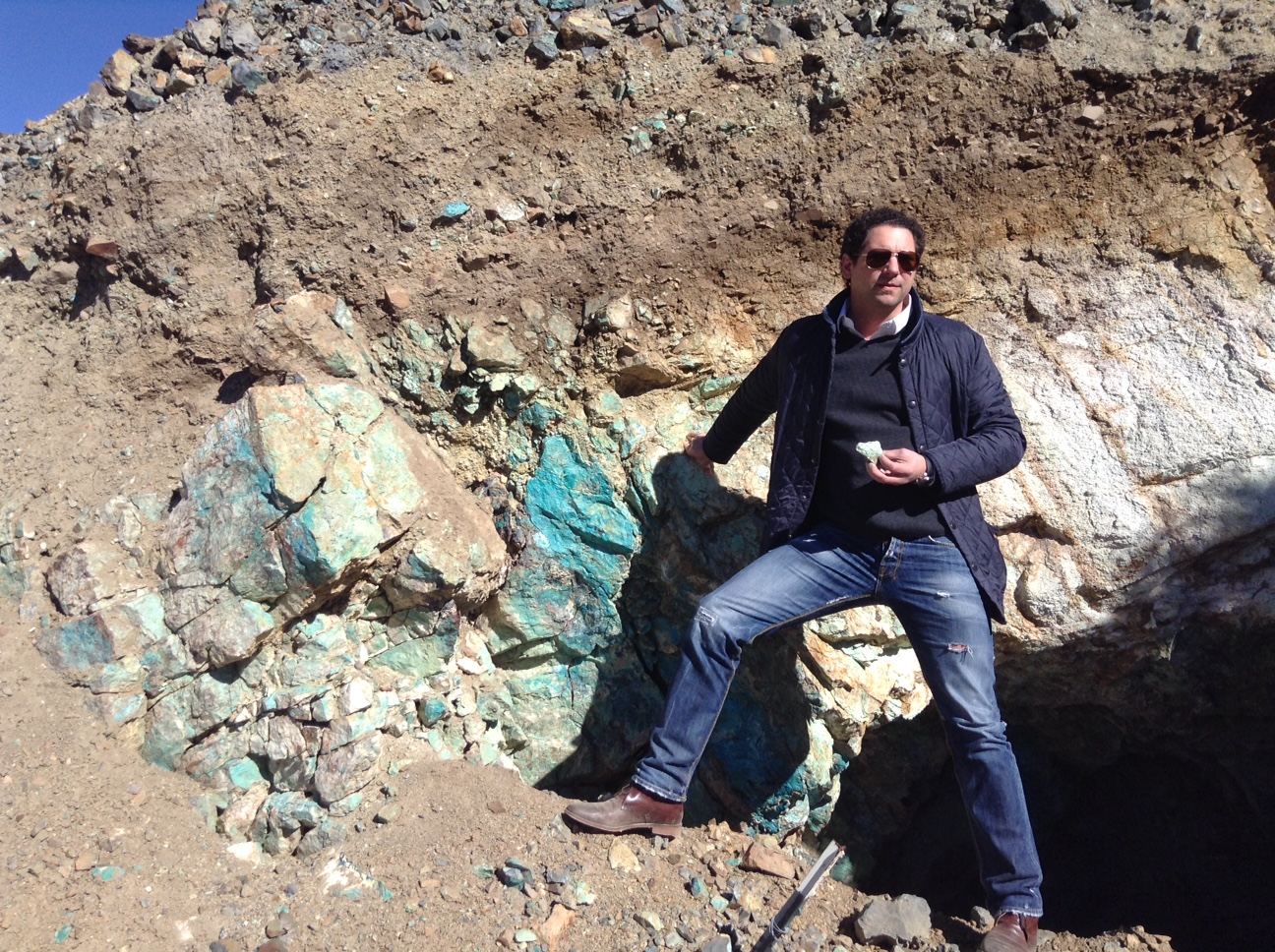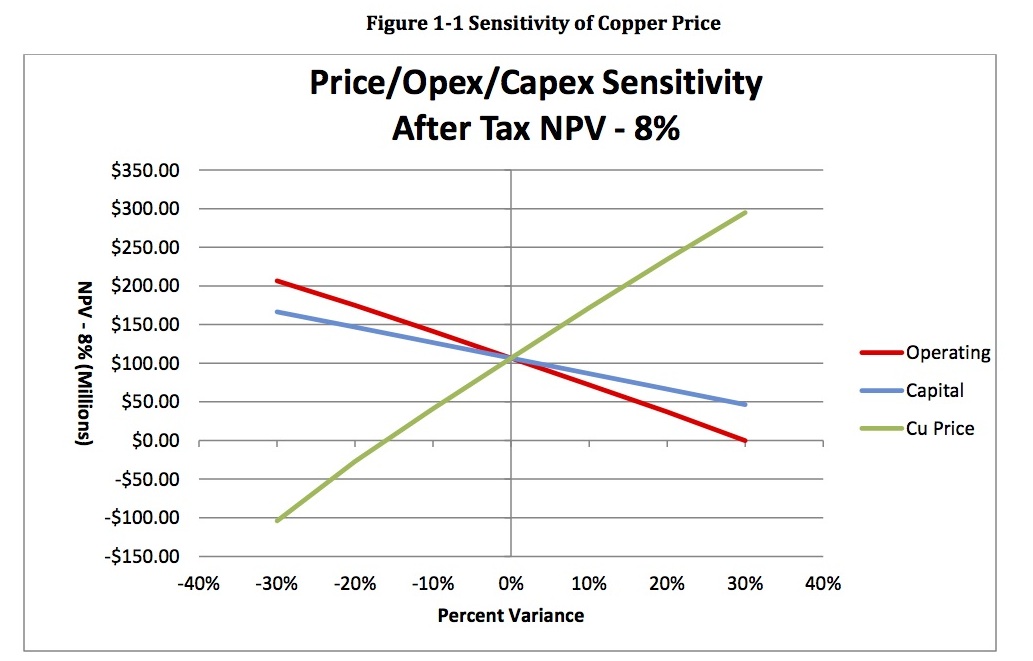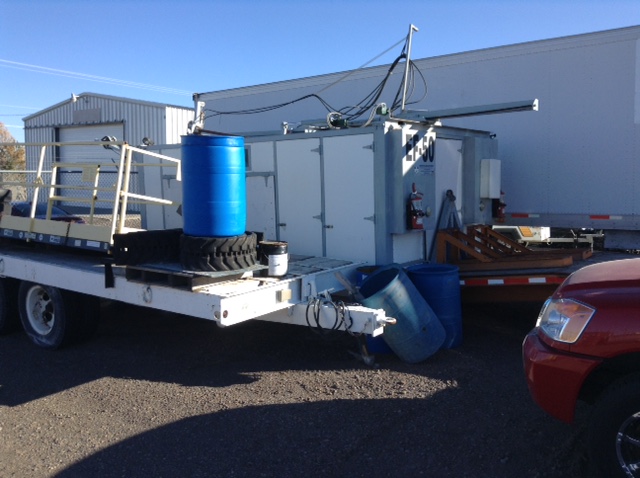
Having just returned from a site tour of the company's flagship Contact copper project in Nevada, CopperBank Resources Corp (CBK:CSE) Executive Chairman Gianni Kovacevic (pictured) is optimistic for project optimization and exploration possibilities, and has been aggressively buying shares in his company in the open market.
The Contact project is located on the Idaho border in northeast Nevada with the nearest 'big' town being Twin Falls, Idaho. Recently taken over by Copperbank, the project also came with some additional assets (drill and an SX/EW plant) that Copperbank hopes to monetize to limit future dilution.
- IPO was November 7, 2014 with a market capitalization of $13 million demonstrated from raising $1.6 million at 0.10 per share and 130 million shares outstanding.
- Paid consideration of $7.5 million, in shares, for: The Contact Copper project in North East Nevada and $2.4 million, in shares for the Pyramid Project on native-owned lands in southwest Alaska (near tide water).
- It would take approximately $40 million Canadian to duplicate all the work done to date on CopperBank's projects. Let's not forget any US based project has recently went up in value due to the USD.
The area outlined in blue is the Contact deposit (reserves and resources), with 5.8 million pounds of Cu of historic, high-grade production (from Nevada Department of Mines records).The green areas represent highly prospective exploration areas. Mr. Kovacevic mention he is excited about the potential at the Copper Ridge prospect which has had previous outcrop rock chip sample results of up to 12% copper. Copperbank is currently not planning to fund any exploration in the short term, though it is possible they will try to further demonstrate the 'generative' aspect to the Company by looking at having work done here, with other people's money, all the while keeping the Contact Deposit, currently at the Pre-Feasibility level, safely in the company's asset base.
CopperBank is anchored by the Contact project which has exploration and optimization potential in addition to an established copper oxide reserves and resources. The project is close to infrastructure and is only 1 kilometre from highway 93.
Approximately one third of the land package at Contact is patented land, 2,650 acres in 156 claims and owned 100% by the company. As well the company has 288 un-patented claims that require the basic $140 per annum holding costs or ~$40,000.
The project is named for the "contact" between Jurassic granodiorite stock and the carboniferous sedimentary rocks. Between 1909 and the 1940's 5.8 million pounds of copper was mined here. The first modern exploration techniques were adopted at Contact in the past 10 years and now have demonstrated a large scale copper oxide copper deposit.
According to Kovacevic, the main question is can this project be enhanced and optimized to demonstrate higher grades? In the 2010 - 2012 period, when the market for natural resource stocks was exploding, companies were looking for bigger and counting on higher and higher copper prices. View the reserve table for Contact where the cut-off was taken to 0.07% copper.
Looking at the 2012 Mineral resource estimate, compiled from work that took place 2010 - 2012, there are potentially higher grades using a 0.20% copper cut-off. Kovacevic believes there is potential to re-visit the project methodology focusing on higher grades, and potentially reduce possible production rate and capex, which may enhance project economics.
"Contact can demonstrate robust grades while maintaining significant pounds," Kovacevic writes. "Let's not forget the exploration potential just west of the Contact deposit at the Copper Ridge and New York prospects."
The sensitivity graph for Contact is listed below (the assumed price of copper here is $3.20.) The project is highly leveraged to the copper price with the NPV at $2.90 /lb copper being ~$50 million and jumping to ~$167 million at $3.50 /lb copper.Kovacevic states "we bought Contact with a patient strategy in mind meaning $3.50 /lb copper or higher. Very few projects work at $2.75 or even $3.00 /lb copper. In fact BHP recently added a slide in the presentation to reflect the real incentive price for new production, and according to them more than 50% of future production needs $3.50 /lb or better copper prices to get the green light. We fully agree with BHP, meaning our medium to long-term analysis with Contact is more reflective to those numbers."
A total of 284,000 feet has been drilled at Contact and the core is located in a warehouse for storage. The cost to duplicate this level of drilling in the USA would be ~$20 million CDN today, according to Kovacevic.
Most of the contemporary drilling at Contact (185,000 feet) was drilled with rigs that were owned by the company that merged with CopperBank (Enexco International). CopperBank still owns one of the EF-50 drill rigs. At PDAC Mr. Kovacevic met with Discovery Drill Manufacturers who told him these rigs sell for $457,000 USD new. CopperBank also owns ~$250,000 of drill bits, rod and various parts that go along with the rig. The plan is to sell this rig, through DDM, or other channels providing non-dilutive cash to the company.
The previous company also purchased a 2,000 tonne per day pilot SXEW plant. The replacement cost of this equipment is approx $2.5 million USD, according to Kovacevic. He does not expect to be able to capture replacement cost for this plant, but says even if it were scrapped for stainless steel and copper, the metal alone would be worth $250,000.
CopperBank hopes to raise cash by selling these assets rather than diluting the company with a low priced equity sale. The current Copperbank burn rate is kept low with land holding costs totalling ~$40,000 per year payable to Bureau of Land Management. The majority of CopperBank's 2015 costs are already sunk so the cash on hand, plus assets could offer the company a runway well into 2017, Kovacevic says. The company's aim is to acquire more projects with defined resources, so cash requirements will be adjusted to reflect each new project.
Over the past several months, Mr. Kovacevic has purchased about 4 million Copperbank shares in the open market. Kovacevic has always invested in Copper companies and believes the current valuation of CopperBank to be low. Currently copper stocks in the peer group are trading at roughly .01 /lb in the ground to about 1/10th /lb and are well below all the transitions of the past 8 or 9 years (between .03 and .10 /lb in the ground). CopperBank is currently trading at 1/5 of one penny or on the low-end of the peer group. The goal is to continue to protect copper pound per share value by maintaining the low overhead. Kovacevic says Copperbank's management team are focused, 'owner operators' who are very mindful of dilution and have the ability to raise critical non-dilutive cash to maintain that well into the future.
Mr. Kovacevic's comments have been made in a Forward Looking Context. Seek professional advice (this is not investment advice) before making an investment decision, and make sure you fully understand the risks (investing in small mining stocks could result in a total loss). Copperbank has outlined the risks the company faces in their Annual Information Form filed on SEDAR, which all readers should consult. Always do your own due diligence. Certain information in this article may constitute forward-looking statements under applicable securities laws and necessarily involve risks associated with regulatory approvals and timelines. Although CopperBank believes the expectations expressed in such forward-looking statements are based on reasonable assumptions, such statements are not guarantees of future performance and actual results or developments may differ materially from those in the forward-looking statements. For more information on each of CopperBank and the risks and challenges of its businesses, investors should review the information circular dated September 12, 2014 and its other continuous disclosure filings that are available under CopperBank’s profile at www.sedar.com.


























